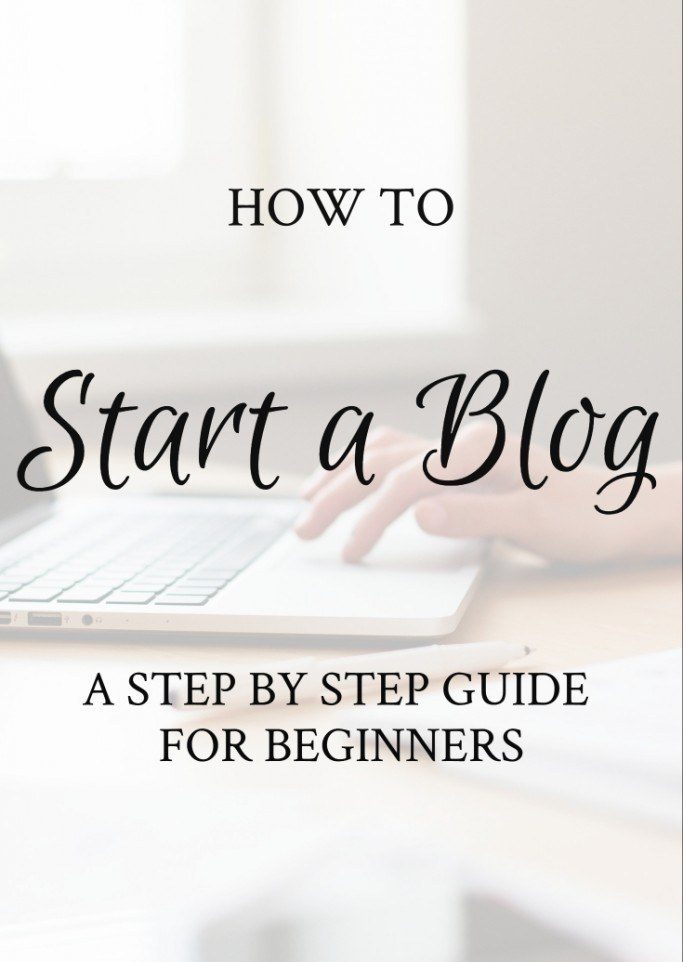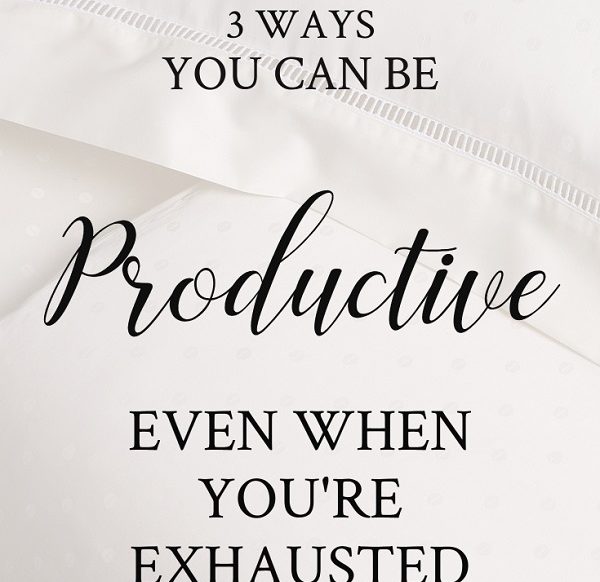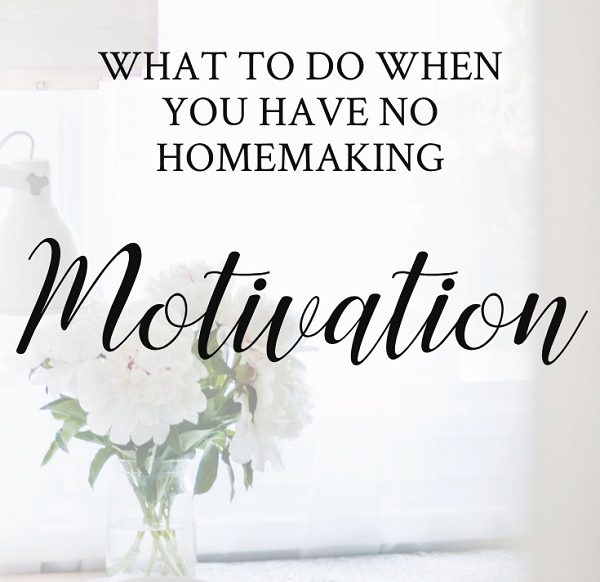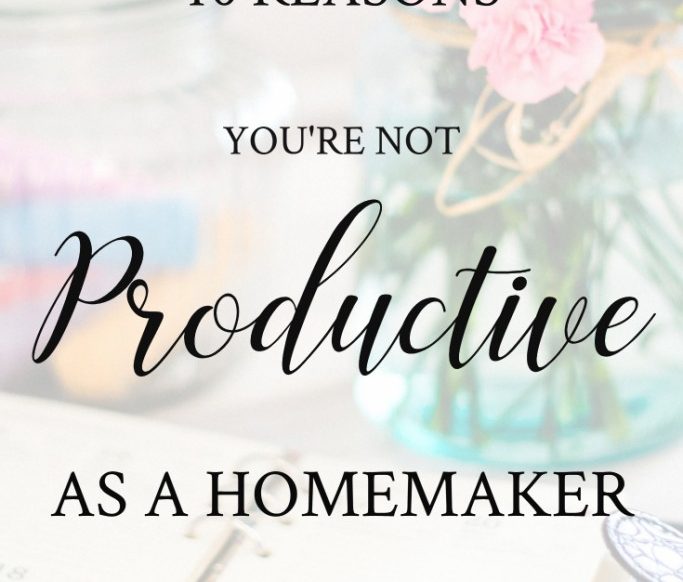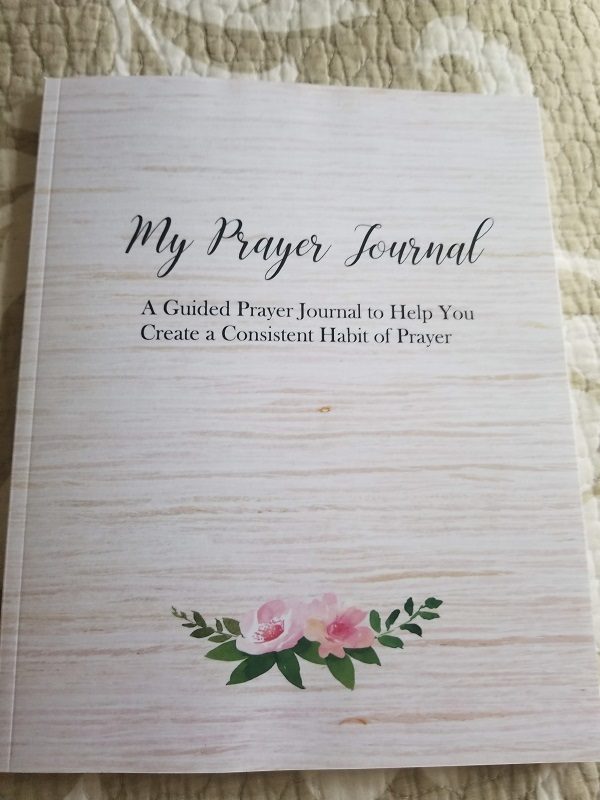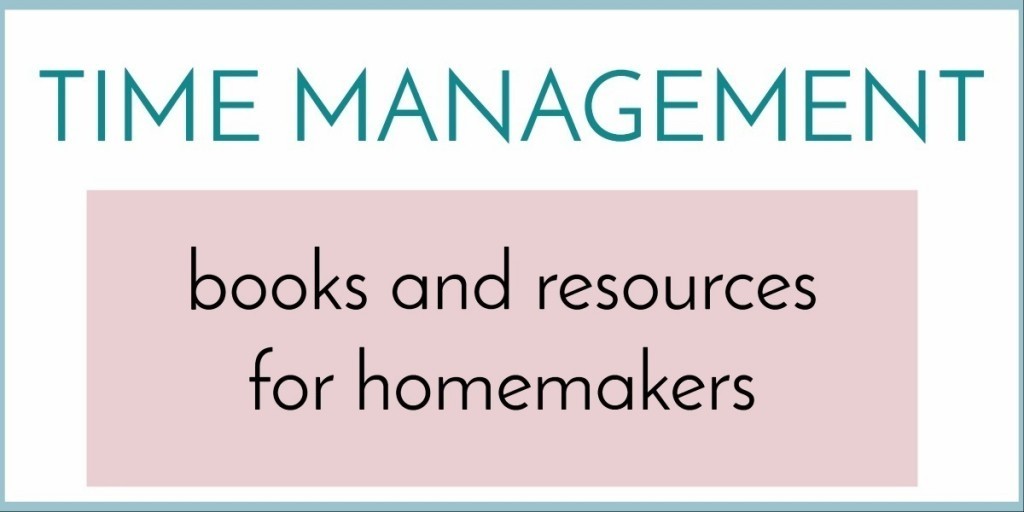The Morning Routine for Kids that Changed Our Days
One of the things I love about homeschooling is that our mornings feel so free and relaxed. We don't have to race to get everyone packed up and out the door for school. We can wake up slowly and enjoy our mornings together. But before I had a good morning routine for the kids, our slow and relaxed mornings could easily turn into “Not getting our homeschool day started till noon.” I don't want that! That gives everyone less time to play in the afternoon, pushes back dinner time, pushes back bed time, which means it's easier to sleep later in the morning and start the same cycle all over again.
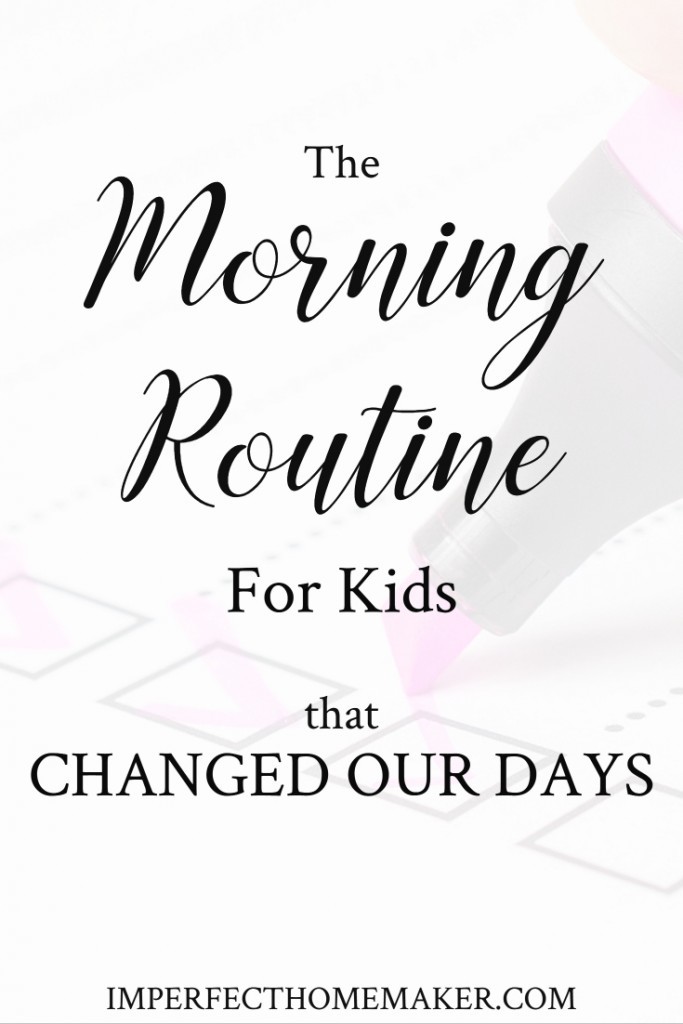
When we all get up and going earlier, we have time to accomplish more, and spend more quality time together!
But just waking everyone up early is not enough. Before I implemented a morning routine for them, my kids would get up, wander around in their pajamas, eat something, make a mess that they didn't clean up, lay in their bed reading a book, and then when I was ready to start school for the day, I'd look around and realize that we had an hour's worth of cleaning to do because they had things strewn everywhere from their “relaxed and slow morning!”
It was stressing me out big time, and keeping us behind on everything all the time.
The thing is…kids are kids. They have to be taught. It's not enough to wake them up and tell them to get ready for the day. They need clear direction.
So I set out to make a morning routine for them that was so simple, they couldn't possibly neglect it without being outright purposely disobedient.
It was three things:
- Get Dressed.
- Read your Bible.
- Tidy your room.
Three things. Anyone can remember that, and it's not overwhelming at all. In fact, I adopted the exact same morning routine for myself because who doesn't want life to be simple?
I created a little chart and hung it in each of the kids' rooms so that they would have no excuse in the mornings to be wandering around, taking forever to get ready for the school day.
I also created a room cleaning checklist so they would know my definition of the phrase “tidy your room.”
I have them independently do those three things, then I prepare breakfast for everyone, and after breakfast we complete the rest of our “morning things” together as a family (cleaning up our breakfast dishes, brushing our teeth, fixing our hair, etc.)
This way, the kids are learning some independence and becoming more skilled at preparing themselves for the day without my help, but it's not so much that's it's overwhelming to them where they shut down and do nothing.
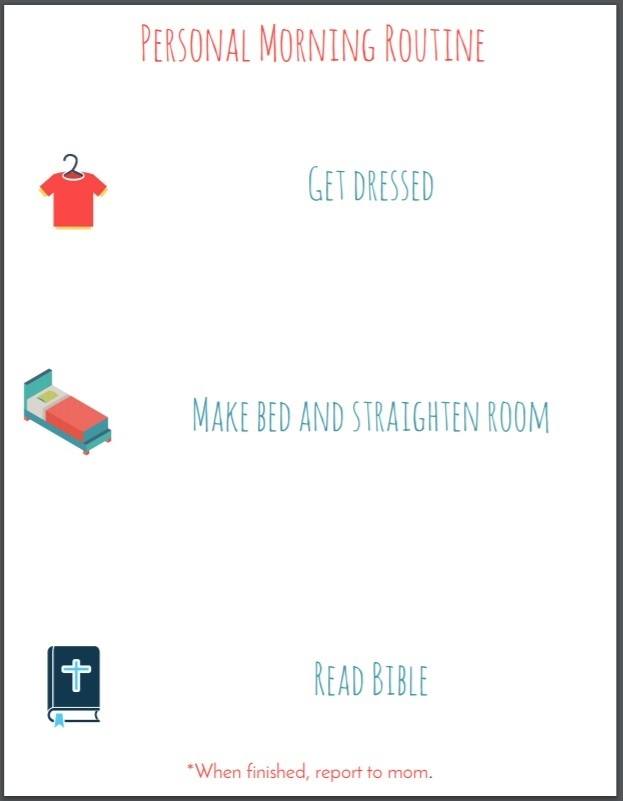
I can't begin to tell you what a difference this simple change has made for our mornings! The kids know exactly what they need to do without feeling overwhelmed. When our morning gets off to a smooth start, our whole day goes better!
Would you like to use our morning routine and room cleaning charts for your own family? (There is a whole set that matches the one shown above.) Imperfect Homemaker email subscribers have access to these charts (and many other homemaking printables!) for free!
When you subscribe, your first email will contain the password to the library of free printables.
How to Start a Blog
If you want to make money blogging, you will need to have a blog!
I know how overwhelming it feels when you are first starting out, so I’ve created this step-by-step guide to setting up your own blog.
Just follow each step exactly as it’s written, and you will be blogging on your very own website in no time! (Disclosure: this post contains affiliate links)
1. Choose your blog topic.
Some questions you will want to ask yourself as you choose your topic:
- Do I know a lot about this topic?
- Do I enjoy this topic — enough that I could write about it on a regular basis?
2. Choose your blog’s name.
Make sure that the name you choose for your blog is something people can easily remember. If you blog about home decor, you don’t want to name your blog Musings of a Mom. Make your blog’s name reflect something about home decor.
You’ll also need to check to see whether the domain name you want is available. Your domain name is sort of like your blog’s address. It’s where people will find you on the web.
Some other things to consider when choosing a domain name:
- Use a .com address instead of .org .me , etc. Using other variations besides .com will make it difficult for people to remember your address and find you online.
- Make sure your address is easy to spell. You don’t want people not to be able to find you online because they can’t spell your web address properly. Typing it out before you settle on something will help you see what it look like to people.
- Don’t use hyphens in your domain name. Try telling someone you blog at “My hypen cool hyphen blog” and you’ll see why.
- Consider life changes. I know some bloggers who blog about toddler activities, but what about when their kids are older? What will they blog about then? Make your blog’s theme and name something that can easily grow and morph over the years.
Sometimes someone is already using the domain name you want, so you’ll need to go back to the drawing board. You can use the domain name checker below to find out if the domain name you want is available.
You’ll also want to check Facebook, Twitter, Pinterest, Instagram, etc. to make sure the social media profiles matching your blog’s name are available.
3. Set up your blog.
If you want to make money blogging, I highly recommend starting a self-hosted WordPress blog. You will pay a small monthly fee for someone to host your blog (this is sort of like renting your space on the internet.) You could start a blog on a free platform, but all of the free platforms have severe limitations when it comes to earning money. You may not be allowed to place ads or use affiliate links or set up a shop with your own products. If you are serious about making money blogging, your best bet is to set up a self-hosted WordPress blog.
There are lots of hosting companies online, all with different pros and cons. For someone just starting out, Bluehost is your cheapest bet and should work just fine for what you need. I started with a budget hosting company and moved to Black Chicken host once my blog grew larger and I needed something more robust.
If technical terms feel scary to you, Bluehost will walk you through the entire process.
- Click here to go to Bluehost, then click the green “Get Started” button.
- Choose your plan. Plus or Prime are the best (Prime has domain privacy, which is important if you don’t want people to be able to find your private information via your blog.)
- Enter your domain name. You can enter this now or later. If you purchased a domain somewhere else, you’ll enter it on the right side.
- On the next page you will enter your account information.
- Next you’ll choose the plan you want. You can skip pretty much all of the add-ons they will try to sell you.
- Enter your billing info
- Choose a password
After you’ve purchased your hosting plan, you can log in and get started right away with WordPress!
Don’t be alarmed if you don’t see your domain name showing up right away. It takes anywhere from 2 to 24 hours for your domain to populate on the internet.
But you can go ahead and play around and explore some of the features of your WordPress blog before you go to the next step. (I do not recommend choosing one of the free themes that Bluehost shows you. More on that in the next step.)
Click the “Start building” button to go to your WordPress blog. I recommend clicking “I don’t need help.” This way you are not given a bunch of options that you don’t need or want and then have to go back and undo.
4. Choose your WordPress theme.
You can start by using the free theme that is automatically installed. However, you will no doubt want to change it to something more eye-appealing.
I do not recommend using free themes, either those recommended by Bluehost or others from around the web. The reason for that is they are not updated frequently and therefor not secure from hackers. You don’t want a blog that is vulnerable to hackers or that will stop working because the features have not been updated.
I highly, HIGHLY recommend Thrive Themes. I use them for all of my blogs, including this one.
Some reasons I love Thrive Themes so much are:
- Easy to customize – just drag and drop. No technical skills required!
- Optimized for search engines
- Lightweight. Thrive themes comes with a lot of features that you would have to piece together with other themes. Because just about everything you need is already included, you won’t need to bog down your site speed by adding sharing plugins, etc.
- Thrive Themes offers an entire suite of products that you can use for various aspects of your blogging, such as building your email list and selling products. When you are ready to add on more advanced features to your blog, the other Thrive products will integrate perfectly with your theme.
Go here to see all Thrive Themes.
5. Change your blog permalinks
In the “settings” column, select “permalinks.” You’ll want to set your permalinks to this structure: https://amylynnandrews.com/%postname%/. This way the links to your blog posts will be very clean and won’t contain dates which could make your older content seem outdated. You want your content to be well-loved whether it’s 2 days or 2 years after you wrote it. (If you have already been blogging and did not set your permalinks this way, do not change them now. It will break all the links to any posts you have written thus far!)
6. Set up https on your domain.
You should receive an email with instructions for activating your domain. Once your domain is activated, you can switch from http to https. A domain starting with https means it is secure for people who will be making purchases. Also, Google is ranking sites lower in the search engines that do not have a security certificate, so it’s important for you to have one if you want to be found in searches.
- Log into your Bluehost account, then click on “My sites” in the left column. Click “Manage site”, then click on “security”. Find the switch that says “Free SSL certificate” and turn it to On.
7. Begin to blog!
You are now ready to begin publishing blog posts. Any time you want to log in to your WordPress dashboard just type in “yoursitename.com/wp-admin” and it will pull up the link for you to log in. If you don’t remember your login, look for the welcome emails sent to you by Bluehost. One will have login info for Bluehost and one will have login info for WordPress.
3 Ways You Can Be Productive, Even When You’re Exhausted
After the birth of my 3rd child, it began to dawn on me that I was more than just a tired mom. Day after day I waded through a dark fog, barely able to place one foot in front of the other. My children were all good sleepers, so there was no logical reason for me to be so tired.
Although I've never been one who's quick to run to the doctor, I scheduled an appointment for some bloodwork. Unfortunately I came away from the appointment with the answer that everything was “normal” and that I should “take more vitamins.” But I most certainly did not feel normal!

To make a long story short, I spent the next seven years trying new doctors, new supplements, new dietary changes, and I’ve lived through all of it with the diagnosis of Chronic Fatigue Syndrome, which basically means “You’re extremely weak and tired all the time but we don’t know why.” Yeah, thanks doc. I kinda already knew that. I could go off on a rabbit trail and talk about how so many other diagnoses are the same way -pretty much just giving a fancy name to something you already know. But I won’t get sidetracked there. All I’ll say for now is that praise the Lord I have found some answers that have truly been life-changing for me and my family. I’m not yet at 100% (will any of us ever be until we get to heaven?) but I am definitely in a much better place health-wise than I was 10 years ago.
What I want to focus on is how I survived all those years of living in a deep fog, with small children to care for and homeschool.
Whether you are chronically ill or whether you’re just tired all the time because you have a lot of demands on you that wear you down, here are 3 ways you can be productive even when you’re exhausted.
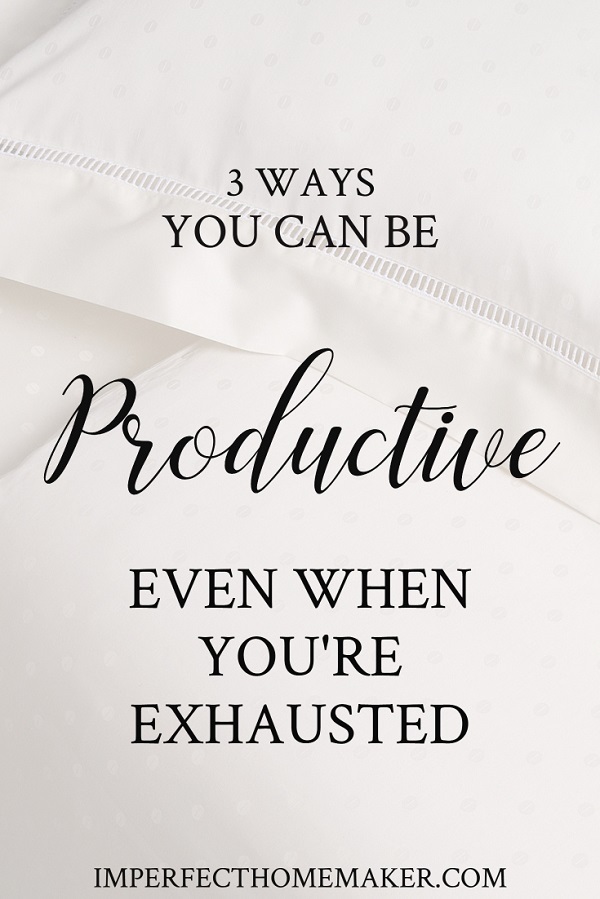
1. Give yourself grace.
I say this a lot, but I'll say it again: True productivity occurs when you’re productive at the things that actually matter.
My house was a disaster all the time during those early years (my house still needs help – I’m still catching up from years of neglect!) I rarely went to bed with a clean kitchen. My husband took so many of the household responsibilities on him every evening after he’d already worked a full day.
I didn’t do a whole lot, but I was intentional with what I did do.

The children needed to be educated, so I made sure to prioritize their homeschooling each day. I spent my time learning ways to help them self-educate so that they could still be learning even when I wasn’t able to teach them.
Whether you’re chronically ill or just exhausted, you can be productive when you realize that being productive doesn’t mean “doing all the things.” It just means carefully choosing what is most important and keeping your focus there.
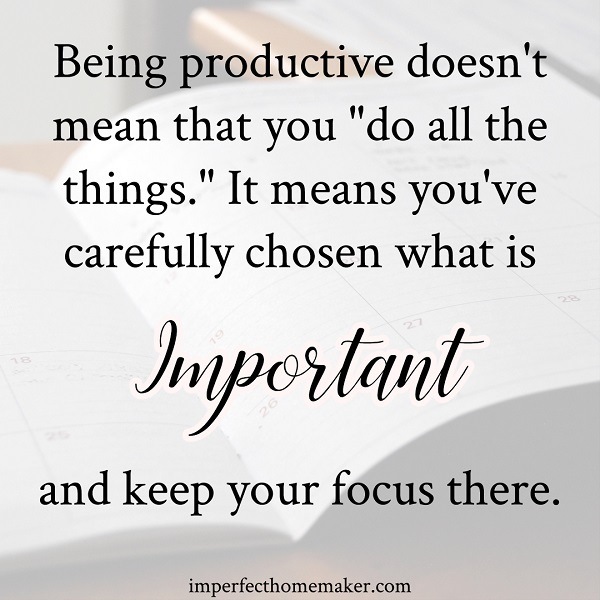
2. Make self-care a priority.
You may feel that you’re too busy to stop your day and prepare healthy meals for yourself, to exercise, or to take a nap.
But if you’re exhausted, one of the most important ways you can spend your time is to take care of yourself! Running on caffeine may make you feel like you have more energy, but if it’s becoming a crutch and causing you to neglect proper nutrition and rest then it’s only defeating the purpose. And if you’re tired because you’re not sleeping well at night, you may want to re-think the caffeine for that reason too.
I get it. It feels like such a pain to stop what you’re doing and chop vegetables so you can eat a salad for lunch. It feels like it’s taking up so much time that you could be spending in other ways. But if you prioritize your health, you’ll find that 1. You’ll have more energy for the other things and 2. You’ll think of creative ideas to make self-care more streamlined. For example, you might prepare a list of quick and easy, yet healthy lunches you can stop and eat. You might decide to cut up enough vegetables for a week at a time so you don’t have to do it every day. You’ll learn exercises you can do while you stand at the kitchen sink washing dishes.

When I was so ill that I spent large portions of my day in bed, I used that time to research things I could do to overcome my health struggles. I was productive, but my productivity didn’t look like doing all the things. It looked like having one goal and chasing after it with everything I had.
If you’re exhausted, you can be productive by taking steps to improve your health. Spend time soaking in a warm bath so you can let go of some stress. Take the time to eat well and hydrate yourself throughout the day. Take the time to nourish your body with gentle movement. Take the time to go to bed at a decent hour.
Burning yourself out by going, going, going might make you feel productive, but are you being productive at what really matters? Does your family want the I-got-all-the-things-done-but-I’m-so-grouchy-and-tired version of you or do they want the happy, stress-free version of you who chose to let some things go?

3. Never give up.
I need to be careful that the advice to never give up doesn’t come across as contradictory to what I just said about taking care of yourself.
By telling you that you can be productive by never giving up, I don’t mean to push yourself to do more, more, more.
I mean what I keep saying over and over: Never give up on what’s most important.
When I spent many of my days in bed, it was discouraging to leave so many things undone. But each day I woke up determined to chip away at my priorities.
Regardless of how much or how little you can do, don’t quit! Don’t decide that because you’re so exhausted you’re just not even going to try.
No matter how little you might think you’re doing, if you do the same thing consistently day after day, eventually it amounts to something big!
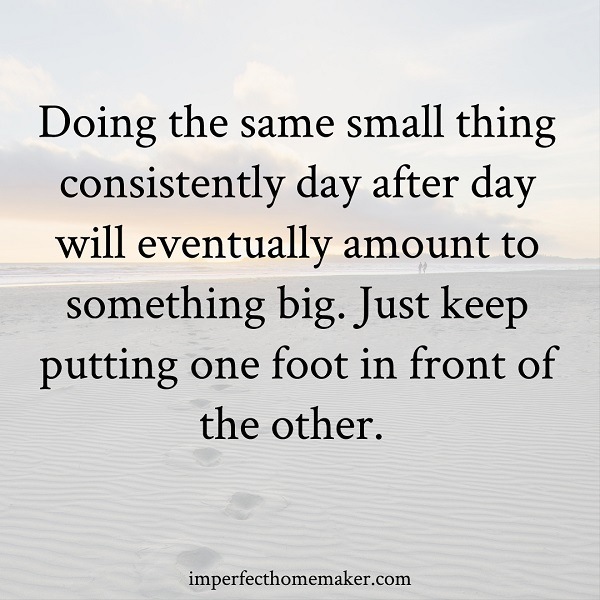
Teach your children about Jesus today. Then teach them some more tomorrow, and some more the next day.
Eat your vegetables today. Then eat them again tomorrow and again the next day.
Learn a little bit about health today, then learn a little bit more tomorrow and little more the next day.
Whatever goal it is that you’re trying to reach, keep heading in that direction. Don’t worry about how long it is taking you. If you keep putting one foot in front of the other, eventually you will get there.
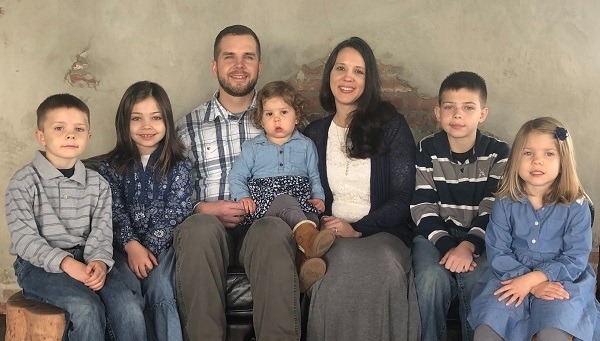
Want more help being productive, even when you're exhausted? Check out the 7 Days to Calm Workbook! I've designed this system to help you overcome the obstacles (like being exhausted!) that are keeping your home from running as smoothly as it can. Once you complete the workbook, your system will be uniquely customized to work with your own personal situation.
What to Do When You Have No Homemaking Motivation
We don't always feel like doing what we need to do
What do you do when you just don’t feel motivated to do anything?
As I write this series, it’s the end of winter – those days where everything just feels “blah”, and all I want to do is sit around in my pajamas and watch movies.
Sometimes our flesh just gets the better of us and tells us that it would be more enjoyable to sleep an extra hour than it would be to get up and get our day started on the right foot.
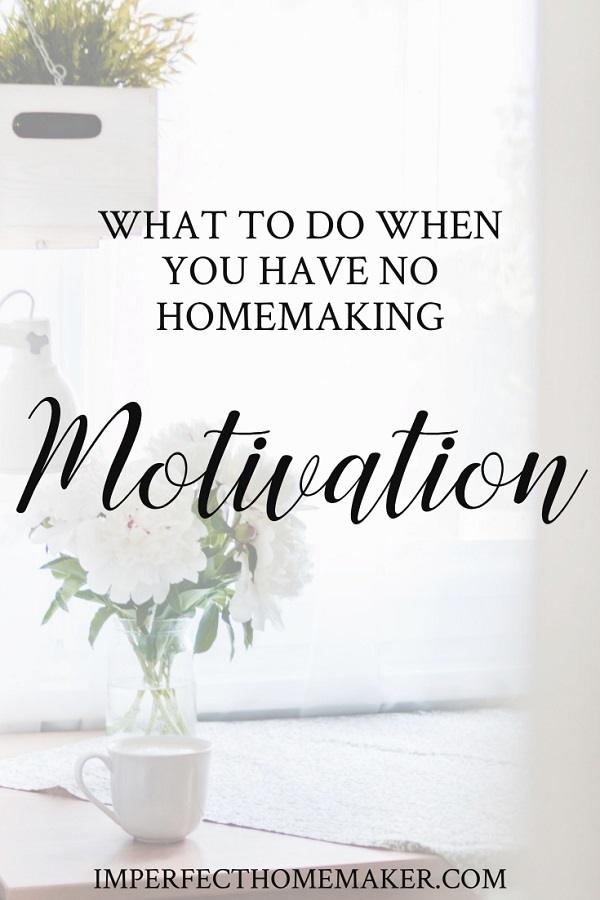
Think about the rewards of completing your homemaking tasks
I'd like you to grab a scrap of paper or print out this worksheet and record a few thoughts over the next few days.
- When you washed all the dishes before bed instead of waking up to a dirty kitchen in the morning, how did you feel?
- When you slept an extra hour (I’m talking about just because the bed feels cozy; not because you truly needed the sleep) how did your day go? Did your day feel hectic and stressful, like you were behind on everything?
When you realize how much stress you take out of your life by staying on top of things, you become more and more motivated to do it. Sure, you may be tired when you stay up to finish those dishes, but when the next day is so much more peaceful, the reward is worth it. And the chemical reaction in our brain says “I want more of that.” So in order to get more of that reward, you have to put the work in to get it again.
Habits help us do what needs to be done
The more you do something, the more you are engraining that pattern into your brain. They’re becoming habits now, and a habit is something you do automatically without even thinking about it. So instead of agonizing each night, talking yourself into finishing the dishes, you just do them because that’s what your brain knows to do. It gets easier and easier!
Decide on three habits that you will work on for the next month, and use the habit tracker to keep yourself on track. Once you’ve developed the brain pathways and created a habit, the task will turn from something you have to force yourself to do to something you just do.
Need more help being productive at home? Check out the 7 Days to Calm Workbook. It will help you identify your obstacles and overcome them for good!
Previous Post:
10 Reasons You're Not Productive as a Homemaker
Next Post:
10 Reasons You’re Not Productive as a Homemaker
In one of my recent emails, I asked my readers about their biggest hindrance to being a productive homemaker. This question really hit a nerve! The responses poured into my inbox, and it was obvious that being more productive is something we all care deeply about.
As I collected all the responses, I placed them into categories. I identified 10 different areas where we get tripped up in being productive.

Why you struggle with being productive
1. Procrastination
2. Lack of Motivation and Discipline
3. Failure To Plan
4. Feeling Overwhelmed/Not Knowing Where to Start
5. Distractions/Feeling Pulled in Too Many Directions
6. Poor Time Management
7. Disorganization
8. Too Many Responsibilities
9. Exhaustion or Poor Health
10. No help from family members
Procrastination is the symptom; not the disease
You will notice that I listed procrastination as the first reason you struggle with being productive. That is because it is often a direct result of the other nine things on the list.
I can’t promise to make you stop procrastinating, but I can help you understand some reasons why you do. When you know the reasons behind your procrastination, you can actually cut it off at the root instead of just trying harder to overcome it.
For instance, you may procrastinate because you don’t have an organized system of doing things. You feel like you don’t know where to start — so you don’t.
Maybe you feel overwhelmed with all of your responsibilities so rather than just starting somewhere, you shut down instead.
Maybe you procrastinate because you feel like your efforts will be worthless. (“Why should I organize the kids’ closet? The kids will just have all the clothes off the hangers and on the floor tomorrow anyway!”)

Is it laziness or something else?
So often we feel guilty about our procrastination because it makes us feel like we’re being lazy. Maybe that is the case sometimes. I used to memorize Bible verses all the time about laziness, and I could not understand why I was so lazy because I wanted so badly to overcome it. Maybe laziness was partially an issue (we all have a sinful nature, after all) but what I didn’t realize was that I was mainly just overwhelmed. I didn’t know how to juggle everything that needed juggling in a busy household, and I just shut down.
Once I realized why I was procrastinating, I was able to work on solutions for overcoming it. Trying harder didn’t work because there was a different obstacle in the way that I hadn’t seen before.
Want more help in becoming more productive at home? Check out the 7 Days to Calm Workbook. It will help you identify your obstacles and overcome them for good!
Read the next posts in this series:
What to Do When You Have No Homemaking Motivation
3 Ways You Can Be Productive, Even When You're Exhausted
A Brutally Honest Day in the Life of an Imperfect Homemaker
An incredibly important aspect of homemaking is how we manage our time.
There are so many things that need to be done, that sometimes it's hard to figure out what to do first.
I always enjoy seeing how other people manage their time, so I thought I would share a typical day at our house. (For even more peeks into our life, follow me on Instagram!)
Instead of just sharing our ideal schedule, though, I'm going to first share my ideal and then share the reality. This will give you a chance to get ideas of how you might like to order your day as well as see the pitfalls where I mess up and how you can do it better.
If you're trying to glean tips for better productivity and time management, you can learn from my mistakes just as well as from the things I do right.

7 AM
HOW IT'S SUPPOSED TO GO: Ideally I should be up by 6 or 6:30 in the morning. If I want to accomplish everything on my yearly goals list, this is the time that I need to get up each day.
HOW IT REALLY GOES: 7 AM is usually about the earliest I get up. I would honestly love to be up much earlier than this every day. I cherish the quiet that I do get, and I know I could accomplish some more of my personal and business goals if I had more quiet time in the mornings.
But after struggling with chronic illness for many years, I have learned that I need to take my days slow and gentle. When I push myself too hard, I end up crashing and then I'm really not very productive at all!
7:30 AM
HOW IT'S SUPPOSED TO GO: If I'm not up by now, this is when I will typically wake up on my own. I read my Bible, use my prayer journal, and go over my to-do list for the day.
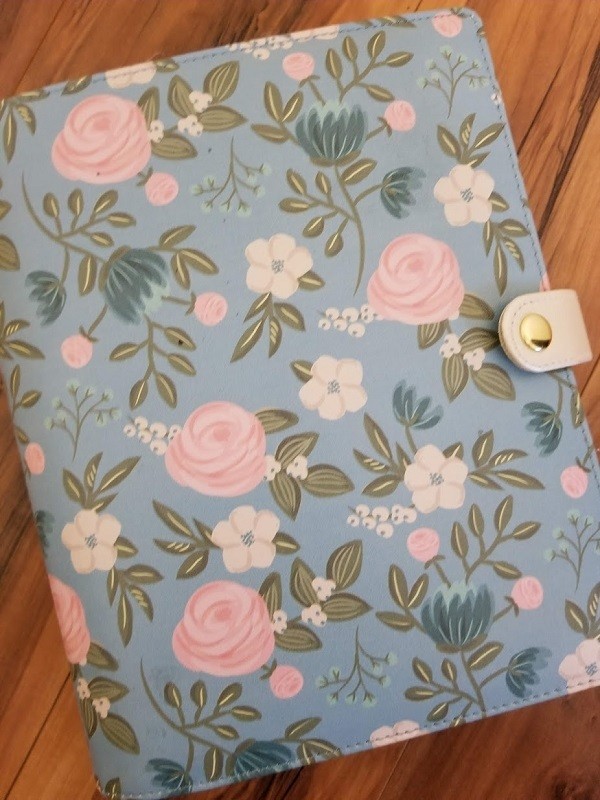
Usually the kids start waking up one by one during this time. The bigger ones will start on their own morning routines and the little ones will snuggle with me for a while.
HOW IT REALLY GOES: This is the one part of my day that usually goes according to schedule. I have been blessed with 5 really good sleepers. In fact, they sleep so well, that I often have to wake them up! I love having this time in the morning to get myself going slowly and gently.
8 AM
HOW IT'S SUPPOSED TO GO: At this point I am supposed to get the kids up and going so that we can get started on our school day by 9:00.
HOW IT REALLY GOES: This is when I play things by ear. If the kids have not stirred by this point, I leave them be and get a little computer work done, whether that's developing products for my shop, planning my menu, or doing my online shopping.
Ideally, if I want to follow the schedule I've written, I should be getting them up and going at this point, but I normally can't find the determination within myself to wake up 5 sleeping children and end the blissful silence.
9 AM
HOW IT'S SUPPOSED TO GO: By this time, all the children are usually awake and I start breakfast. I usually cook eggs or oatmeal for the kids and make a smoothie for myself. I don't really care for most breakfast foods, and I add enough stuff to my smoothies that they keep me going until lunch without a problem.
While I'm making breakfast, the kids are doing their morning routines, which include getting dressed, fixing their hair, tidying their rooms and reading their Bibles. Once they've done those things, they make their way to the breakfast table.
After everyone eats, I leave breakfast cleanup to the kids while I get myself dressed, fix my hair, and get the baby dressed (okay, she's 2, but I can still call her a baby, right?)
HOW IT REALLY GOES: This part of the day goes more or less like I've listed above, but I can promise you that I am putting out lots of fires during this time too. Whether it's sibling arguments (okay, let's be honest, sometimes they are full-out fights), cleaning up some crazy mess the toddler makes behind my back, or like today – finding our dog who had broken his line and run off to play with his canine friends at the neighbor's house, I am often running around, completely out of breath, just trying to keep up with whatever is going on in my house.
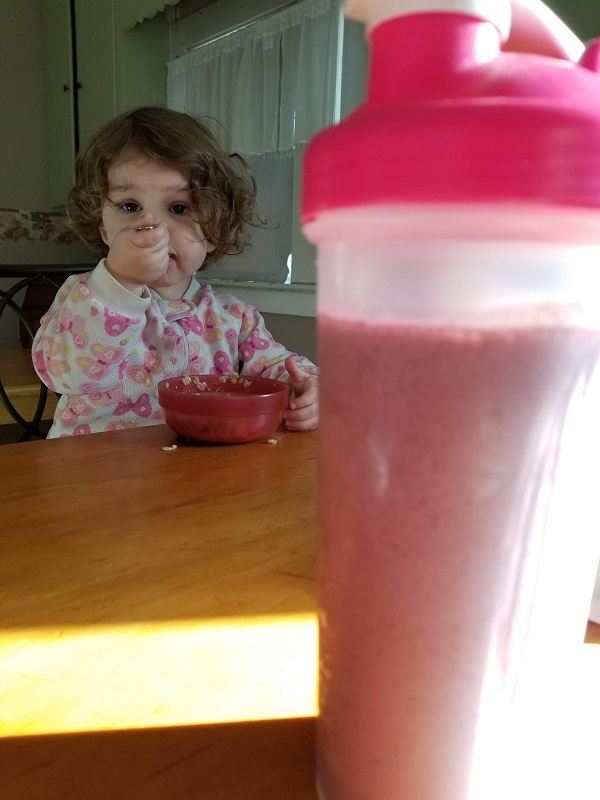
10 AM
HOW IT'S SUPPOSED TO GO:
I would love it if we could have school well underway by this time, ideally doing the bulk of our work from 9 AM to 12 PM.
HOW IT REALLY GOES: Hopefully by this time we are ready to start school if we haven't already. It really just depends on how early everyone wakes up. We do things in the same order every day, so it all gets done. We just finish earlier or later depending on what time we got started.
First, we spend all together “one room schoolhouse” style. We do Bible, scripture memory, language arts, history, science, handwriting, and any other fun activities we decide to do. This is our favorite time of day when we are all together and everyone is (usually) still in a good mood. If there is anything the little ones can't participate in, they usually color quietly, but sometimes I am interrupted by a whiny 2 year old who wants markers instead of crayons and isn't happy with me when I say no.
After we finish the things we can do all together, I send the 2 oldest kids to work on their daily chores while the middle 2 go with me to the other room to do their math and reading lessons. I have always kept the oldest 2 kids basically on the same level with their school subjects, and then I did the same thing with the next 2. It will feel weird when the youngest child gets into school and does everything all by herself. But of course she already tries to participate as much as she can!
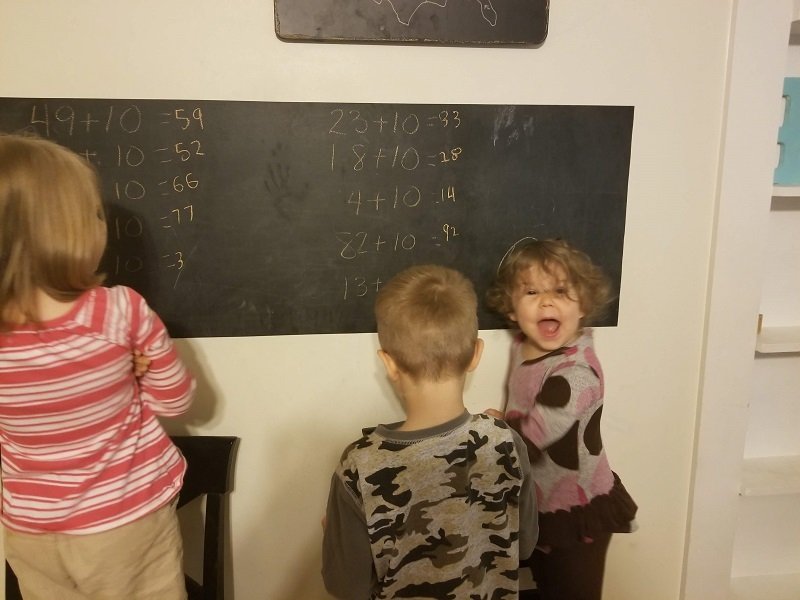
When the middle kids are done with math and reading, we switch and I send them to do their chores while the older 2 do their math lesson with me.
1 PM
HOW IT'S SUPPOSED TO GO: It's not a problem for us to eat a late lunch since we do not get up and eat breakfast terribly early. We all eat, straighten up the kitchen, and the kids finish their chores if they haven't already. After I eat my own lunch, I take the time to do my own household chores and any other miscellaneous tasks on my to-do list.
HOW IT REALLY GOES: To be totally honest, sometimes our day starts falling apart at this point. My brain is worn out after a full morning, and the brain fog that accompanies chronic illness settles in. I often can't figure out what we should be doing next, even though I have a written schedule.
I'll fix the little ones something to eat, get myself something to eat, and then go hide in my room for a bit to settle my brain down. The bigger kids are perfectly capable of getting themselves something for lunch and cleaning up their mess. (The question is whether or not they do clean it up!)
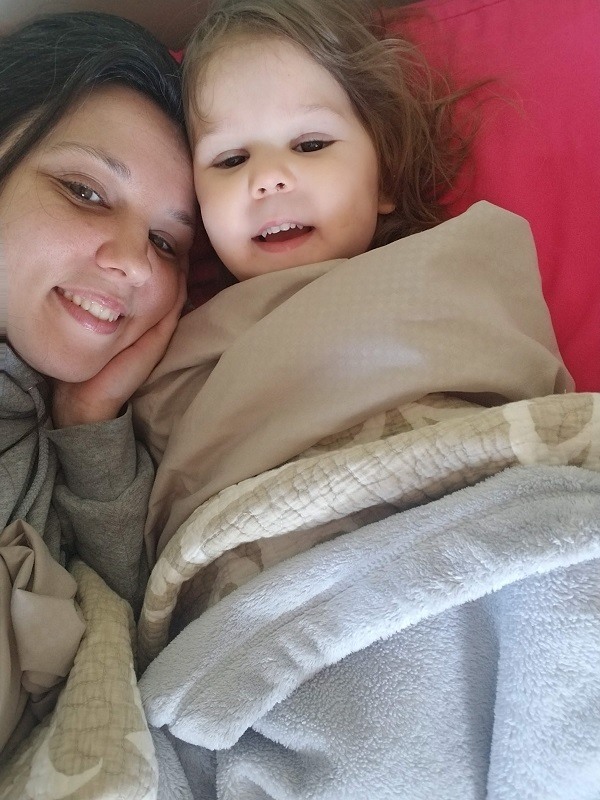
After I eat, I will fold whatever clothes are in my room, throw in a new load of laundry, and then go outside for a while.
2 PM
HOW IT'S SUPPOSED TO GO:
As long as the kids are finished with their chores and any miscellaneous homework assignments I've given them, they are free for the rest of the afternoon. They can go outside, play on their Kindles (all they have is eBooks and educational games on there, plus they automatically shut down after a certain amount of time), do arts and crafts, play the piano, pretty much anything that strikes their fancy. Everything I have available to them is either educational, active, or in some way profitable for their minds and bodies.
The 2 year old goes down for her nap at this time.
HOW IT REALLY GOES:
While the kids are having their free time and the little one is napping, I am free to work on blogging or other computer-related tasks.
However, most days I don't really get a whole lot done during this time. I'm usually pretty tired so I will often take some intentional down time. My brain is firing all day with homeschooling, breaking up sibling fights, and trying to calm girl drama, so sometimes I need some time to just rest and think about nothing! (Hello, mindless Instagram scrolling! This is my time to indulge guilt-free for a little while.)
Unfortunately, I don't always get to rest either. I may hear that the kids are arguing, or like any mother, I just feel like I need to keep checking on them, so my rest time is still not always restful.
If I do get any blogging or other computer work done, this is when it happens, though.
The fruit of some of my afternoon labors
4 PM
HOW IT'S SUPPOSED TO GO
At this point the plan is for me to inspect the kids' chores so that they can re-do them if necessary, then I start prepping supper.
HOW IT REALLY GOES
Sometimes I get into the middle of working on something and I don't go out to the kitchen right at 4:00. Once I get in a zone I have a hard time switching gears.
Some days I go out to start supper and I get distracted with a bunch of other things – I'll decide to switch out the laundry again, or I'll realize how nice the weather is and decide to go outside (who wants to be cooped up in a kitchen when the weather is beautiful?!)
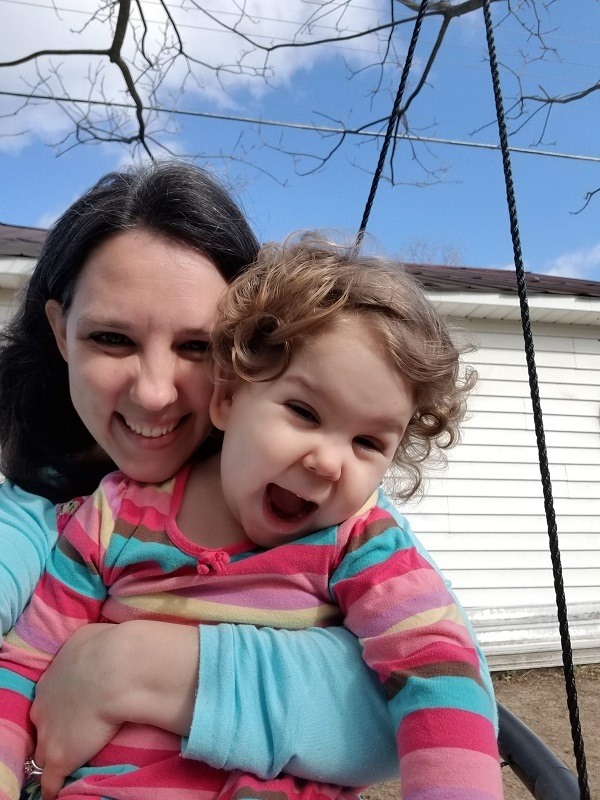
5PM – 10PM
HOW IT'S SUPPOSED TO GO:Ideally I would have supper done and ready to go by the time my husband gets home from work. Then we could all sit down to eat, clean up the kitchen, and get the kids to bed early every night. (Which means I could go to bed earlier every night.)
HOW IT REALLY GOES:
I'm often late getting dinner onto the table (because I was probably busy playing outside instead of cooking!) which pushes the whole evening back, which then pushes the kids' bedtime back, which then puts me getting to bed later, which puts me getting up later, which causes me to have less quiet morning time to work on my personal goals.
I've started taking steps to get dinner on the table earlier. Hint: it doesn't require trying to force myself to get out to the kitchen earlier. I've learned that trying to force myself to fit into a mold that's not my personality only makes me rebel against it and makes things worse. Instead, I've been focusing more on using the weekends to prepare meals to put into the freezer. This way I have dinner already prepared, and if I want to go play with my kids instead of making dinner, I am completely free to do so!
We also need to implement a better bedtime routine – we often just get busy enjoying one another's company (which is a good thing!) but our time together often continues on indefinitely until we finally realize how late it is and then end up rushing everyone off to bed.
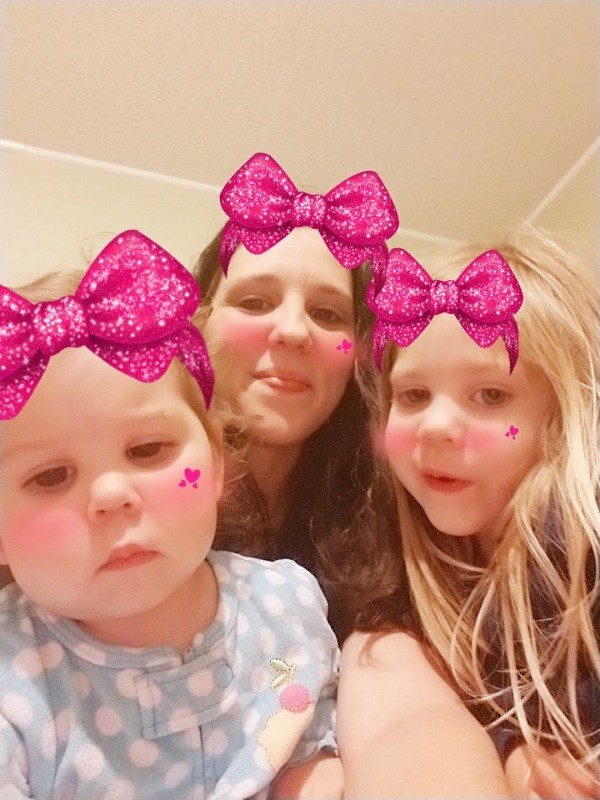
Of course, there's no way I could include the dozens of interruptions I have all throughout the day – potty training that needs to be attended to NOW, little girl drama that needs my gentle attention, spills that must be cleaned, boo-boos to patch up, and on and on it goes.
Every time I write or speak about productivity, my main thrust is always the same.
True productivity cannot be attained without an accurate definition of productivity.
Does it really matter how many items you have crossed off your list if they weren't the most important things to do?
Is it really productive to have everything done at the end of the day if you ignored the things that were the most important?
So then the question must be asked:
What is the most important thing for me to do today?
For me, I believe it is to love my family well.
But loving my family well may look different from day to day. Some days I may need to discipline myself to get delicious meals on the table right on time because that's what they need the most. But other days I may need to give myself grace for not having an amazing supper prepared because I spent most of my time gently helping a girl work through raging emotions. I can be productive by helping a young boy research some question that is burning in his mind. Maybe that means I skip some of my housework to do so.

When I developed my Ultimate Goal Setting Planner, I intentionally designed it to help you determine your big-picture goals for your home, family, and personal life, and then to break those goals down smaller and smaller until your priorities for each day come into clear focus. You can spend less time feeling guilty for the things you didn't do and embrace each day with confidence that the items on your to-do list are the most important things.

Click here for more time management resources:

